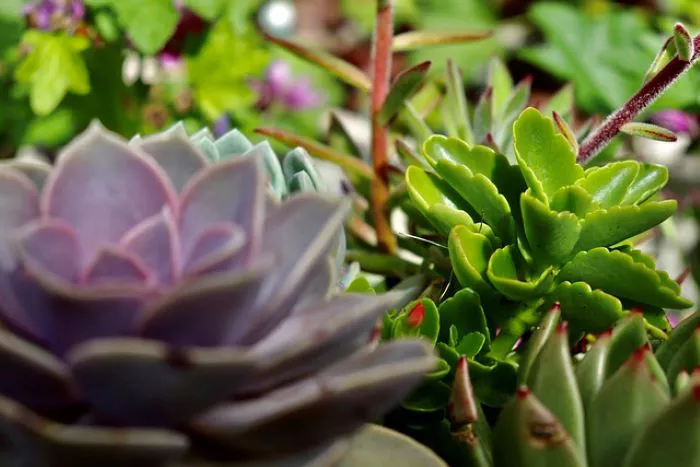Succulents are popular plants known for their unique shapes and low maintenance requirements. They thrive in various environments, making them suitable for both indoor and outdoor gardening. However, to ensure their health and longevity, it is crucial to plant them in the right type of soil. This article will explore the characteristics of suitable soil for succulents, the components of a good soil mix, and tips for selecting and preparing the best soil for your succulent plants.
Understanding Succulent Soil Needs
Succulents are adapted to arid climates where they store water in their leaves, stems, and roots. This unique adaptation means that they require specific soil conditions to thrive. The primary factors to consider when selecting soil for succulents include drainage, aeration, and nutrient retention. Succulent soil should allow excess water to drain quickly while retaining some moisture to support the plant’s needs. Understanding these requirements is essential for creating a healthy growing environment.
Characteristics of Suitable Soil
The ideal soil for succulents has several key characteristics. These include:
Well-Draining: Succulents are susceptible to root rot if their roots sit in water. Therefore, a well-draining soil mix is essential. This allows excess water to escape quickly, preventing waterlogging.
Aerated: Succulent roots need access to air. A soil mix that promotes aeration helps prevent compaction and allows roots to breathe. This is crucial for healthy root development.
Lightweight: A lightweight soil mix is easier for succulents to grow in. Heavy soils can hinder root growth and lead to poor drainage.
Nutrient-Rich: While succulents do not require overly rich soil, they still benefit from some nutrients. A balanced soil mix provides essential elements without overwhelming the plants.
Components of a Good Succulent Soil Mix
Creating the right soil mix for succulents involves combining several components. Here are the most common ingredients used in succulent soil mixes:
Potting Soil: A quality potting soil serves as the base for the mix. Choose a lightweight, fast-draining potting soil without moisture-retaining additives like peat moss or vermiculite.
Perlite: Perlite is a volcanic glass that improves drainage and aeration. It creates air pockets in the soil, allowing excess water to escape and preventing compaction.
Pumice: Similar to perlite, pumice is a lightweight volcanic rock that enhances drainage. It retains some moisture and nutrients, making it a beneficial addition to succulent soil.
Coarse Sand: Coarse sand improves drainage and adds texture to the soil mix. Avoid fine sand, as it can compact and hinder drainage.
Coconut Coir: This organic material comes from coconut husks. It retains some moisture while allowing for good drainage. Use it sparingly to avoid overly dense soil.
Creating Your Own Succulent Soil Mix
Making your own succulent soil mix allows you to customize the ingredients according to your specific needs. Here’s a simple recipe to create an effective succulent soil mix:
Base Ratio: Start with a base ratio of two parts potting soil to one part drainage material. A common mix is two cups of potting soil, one cup of perlite, and one cup of coarse sand or pumice.
Mixing: In a mixing container, combine the potting soil, perlite, and sand or pumice. Use a trowel or shovel to mix thoroughly, ensuring even distribution of all components.
Testing Drainage: Before using the mix, test its drainage properties. Fill a pot with the soil mix and water it. Observe how quickly the water drains. If it drains too slowly, consider adding more perlite or sand to improve drainage.
Commercial Succulent Soil Options
If you prefer not to make your own soil mix, there are many commercial options available. Look for soil mixes specifically labeled for succulents or cacti. These products are formulated to provide the right balance of drainage and nutrients. When selecting a commercial mix, check the ingredient list to ensure it contains perlite, pumice, or coarse sand. Avoid mixes with high amounts of peat moss or moisture-retaining materials.
Potting Succulents
Once you have the right soil mix, it is time to pot your succulents. Here are some tips for successful potting:
Choose the Right Container: Select a pot with drainage holes. This allows excess water to escape and prevents root rot.
Fill the Pot: Add a layer of the soil mix to the bottom of the pot. This provides a base for the succulent.
Position the Plant: Place the succulent in the pot, ensuring that the roots are spread out. Add more soil mix around the plant, gently pressing it down to eliminate air pockets.
Watering After Potting: After potting, wait a few days before watering. This allows any damaged roots to heal and reduces the risk of rot.
Maintaining Soil Health
Once your succulents are potted, it is essential to maintain soil health. Here are some tips for keeping the soil in good condition:
Avoid Overwatering: Succulents prefer to dry out between waterings. Check the soil moisture regularly and water only when the top inch of soil feels dry.
Repotting: Repot succulents every couple of years or when they outgrow their containers. This gives you a chance to refresh the soil mix and provide more space for root growth.
Fertilization: While succulents do not require frequent fertilization, a diluted, balanced fertilizer can be applied during the growing season. This provides essential nutrients without overwhelming the plants.
Conclusion
Choosing the right soil for succulents is crucial for their health and growth. Succulent soil should be well-draining, aerated, lightweight, and nutrient-rich. By understanding the characteristics of suitable soil and the components of a good mix, you can create an environment that supports healthy succulent plants. Whether you choose to make your own soil or purchase a commercial mix, ensure that it meets the needs of your succulents. With the right soil, your succulents will thrive, bringing beauty and joy to your home or garden. Embrace the art of succulent care and enjoy watching these remarkable plants flourish.


